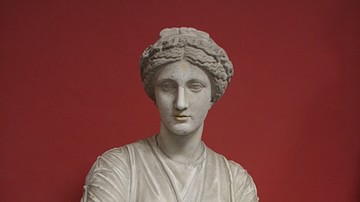Review

| Rating: | |
|---|---|
| Title: | Making the Carry: The Lives of John and Tchi-Ki-Wis Linklater |
| Author: | Timothy Cochrane |
| Audience: | University |
| Difficulty: | Medium |
| Publisher: | Univ Of Minnesota Press |
| Published: | 2023 |
| Pages: | 352 |
Timothy Cochrane’s "Making the Carry" chronicles the lives and labors of John and Tchi-Ki-Wis Linklater as they made a place for themselves and their kin in the boundary water borderlands between the United States and Canada at the turn of the 20th century. Drawing from family archives, oral histories, photographs, and more, it tells a meticulously researched story that will appeal to scholars, enthusiasts, and students of borderlands, Anishinaabeg, Métis, labor, and environmental histories.
Timothy Cochrane’s Making the Carry chronicles the lives and labors of John (Métis) and Tchi-Ki-Wis (Anishinaabeg/Lac La Croix First Nation) Linklater as they made a place for themselves and their kin in the borderlands between the United States and Canada known as the “Boundary Waters” at the turn of the 20th century. To tell this story, Cochrane draws from a Sigurd Olson essay in which the famed conservationist saw Indigenous peoples who were “making the carry,” or migrating across the land (1). For Cochrane, “making the carry” epitomizes the Linklaters’ lives. John's work as a wilderness guide, game warden, and more, coupled with Tchi-Ki-Wis’s skill as a weaver and artisan, allowed both to draw from their traditional ecological knowledge to guide elite visitors through their homelands, carrying traditions from the past into the present. Perhaps the most important “carry” the Linklaters made, however, was their ability to reach “across cultures to further understanding” (28).
The book's five chapters are structured somewhat chronologically. The first two chapters explore the histories of John's Métis family and Tchi-Ki-Wis’s Anishinaabeg family. Chapter Three chronicles the Linklaters’ early years as a couple living in their traditional homelands with their two children, Margaret and Clara. The fourth chapter analyzes John's career as a game warden and wilderness guide, highlighting his overlooked contributions to conservationist thought. Finally, Chapter Five recounts the Linklaters’ deaths and afterlives through the words of their acquaintances. This book is filled with maps, photographs, a family tree, pictures of Tchi-Ki-Wis’s hand-crafted goods, and an article titled “An Old Indian Prophecy” (1924) that John published.
By examining the lives and legacies of the Linklaters, this book offers convincing evidence of Indigenous presence, adaptation, and persistence, despite the historic and ongoing erasure from local and national histories of this region. Furthermore, this book showcases John’s influence on conservationist thought and policy in the early 20th century. His career guided well-known scholars such as Sigurd Olson and Aldo Leopold, even if his efforts were not always acknowledged in their work. Additionally, this book is meticulously researched and, for the most part, carefully written. It offers a thorough and lively account of John Linklater’s life, drawing from family archives, oral histories, photographs, first-hand accounts, and other primary sources. It is also thoughtfully composed; the non-Indigenous author takes tremendous care as he describes the language, traditions, and customs of the Anishinaabeg and Métis peoples, and he thinks deeply about the words he uses to tell these stories.
For all this study’s strengths, however, two weaknesses must be noted. Firstly, Tchi-Ki-Wis Linklater’s story is buried under the weight of John’s. Although Cochrane admits there is much unknown about Tchi-Ki-Wis's life, the study rarely analyzes why these silences exist in her archive and what this gap might tell us about Native women's histories. It becomes especially clear that John's story takes precedence when the author ends with the claim of “He was a masterpiece” without mentioning Tchi-Ki-Wis (221). Secondly, although “making the carry” serves as a useful metaphor to describe the Linklaters’ lives in their homelands, one cannot help but wonder if John's or Tchi-Ki-Wis’s words could have framed the study better than Sigurd Olson’s. It is striking that a book about the lives of the Linklaters is organized around the words of someone of settler descent who spoke about them rather than the words they, or their Indigenous kin, used to describe themselves.
These critiques aside, Cochrane, the former superintendent at Grand Portage National Monument, succeeds in writing a meticulously researched and carefully documented microhistory of Indigenous presence and influence on the Boundary Waters region and beyond. This book tells a unique and compelling story that will appeal to scholars, enthusiasts, and students of borderlands, Anishinaabeg, Métis, labor, and environmental histories.
About the Reviewer
Cite This Work
APA Style
Ballew, Z. (2023, March 07). Making the Carry: The Lives of John and Tchi-Ki-Wis Linklater. World History Encyclopedia. Retrieved from https://www.worldhistory.org/review/312/making-the-carry-the-lives-of-john-and-tchi-ki-wis/
Chicago Style
Ballew, Zada. "Making the Carry: The Lives of John and Tchi-Ki-Wis Linklater." World History Encyclopedia. Last modified March 07, 2023. https://www.worldhistory.org/review/312/making-the-carry-the-lives-of-john-and-tchi-ki-wis/.
MLA Style
Ballew, Zada. "Making the Carry: The Lives of John and Tchi-Ki-Wis Linklater." World History Encyclopedia. World History Encyclopedia, 07 Mar 2023, https://www.worldhistory.org/review/312/making-the-carry-the-lives-of-john-and-tchi-ki-wis/. Web. 29 Apr 2025.




